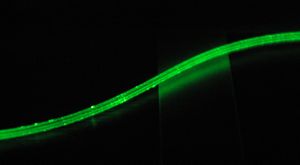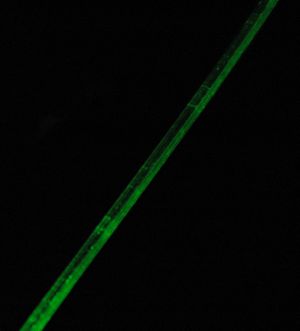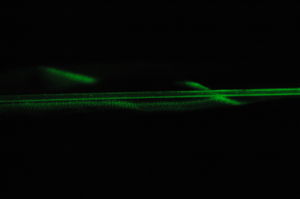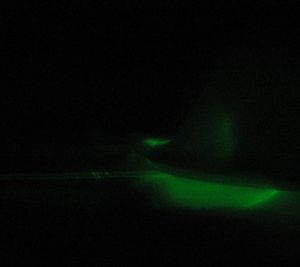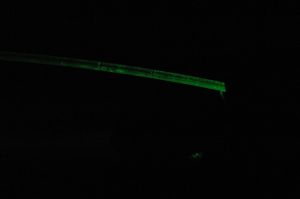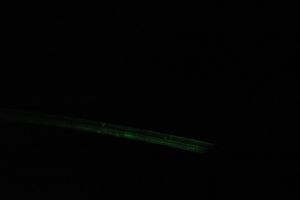Difference between revisions of "Laser Images"
| Line 30: | Line 30: | ||
[[File:Bright Clear Nearly Perfect DSC 0019.JPG|thumb|center|Figure 6: Top view of light guide recently cut from spool. Uniform brightness indicates few surface abnormalities. (MFR Saint Gobain BCF-98)]] | [[File:Bright Clear Nearly Perfect DSC 0019.JPG|thumb|center|Figure 6: Top view of light guide recently cut from spool. Uniform brightness indicates few surface abnormalities. (MFR Saint Gobain BCF-98)]] | ||
| + | |||
| + | |||
| + | |||
| + | |||
==Damage from Clamp== | ==Damage from Clamp== | ||
Revision as of 06:30, 28 December 2015
Used Fibers
Light Loss Along Length
I took the segments of wave guide that I had examined under microscope and exposed them to a green laser pointer with very little ambient light. The laser illuminated the wave guide and revealed the effects of surface damage. Areas with fissures, dust, or residue sparkled under the green light. This indicates significant light loss. Understanding light loss is key to the success of the tagger microscope.
Surface Imperfections
Details of the damage are visible in these pictures.
Figure 2: In the upper right-hand third of the image are two parallel bands outlining a section of wave guide that seems brighter. This corresponds to the glue residue from the sticky labeling system. Other damage can also be seen.
Figure 3: Nicks, gouges, and residues coat the length of the fiber, causing light loss everywhere.
New Fibers
Clarity
Freshly cut light guide demonstrates remarkable clarity and minimal light loss. These images illustrate the smoothness of an undamaged surface.
